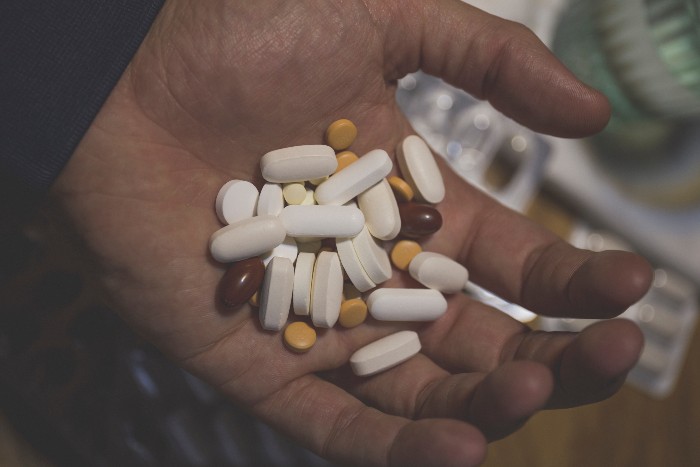Sufficient intake of micronutrients is critical for healthy development and growth of children and overall health maintenance in adulthood. When inadequate consumption of essential micronutrients is prolonged over time, it could lead to deficiencies and negative health outcomes. Approximately 33% of the U.S. population is at risk of deficiency in at least one micronutrient, or already has anemia [1]. Amongst various types of nutritional deficiency, iron deficiency is the most prevalent nutritional disorder in the world according to the World Health Organization [2]. As a global health problem, iron deficiency is affecting 50% of 2 billion anemic individuals worldwide. Population groups that are at higher risk include elderly, toddlers, and pregnant women, but the highest burden occurs in children between the age of 1 and 4, and women of reproductive age [3, 4]. Iron deficiency in children leads to behavioral disturbances such as fatigue, irritability, and pica (an intense craving for and ingestion of a nonfood item) and developmental delays. In pregnant women, iron deficiency can increase the risk for preterm delivery and low birth weight newborns [4]. It is necessary to address iron deficiency before symptoms become severe and result in significant health decline.
The most standard and effective treatment for iron deficiency to date is iron supplementation. Iron salts including ferrous sulfate, ferrous gluconate, and ferrous fumarate are the most well-known and widely available forms of iron supplements. While they can be effective to some, iron supplements are known to have various issues. One of the biggest challenges includes poor absorption and low bioavailability. Traditional iron salt preparations are known for their poor absorption and bioavailability. For instance, absorption of iron from supplements in iron-depleted patients is 2-13% when consumed with food and 5-28% when consumed without food [5]. Absorption in infants and young children was even worse.
To compensate for such low absorption, these iron supplements are administered in high doses and/or over a long regimen. High doses of iron supplements are known to cause multiple gastrointestinal side-effects including constipation, black stools, nausea, reflux, and vomiting [3]. Pregnancy already causes gastrointestinal symptoms, and iron supplements exacerbate such side-effects, especially in high doses [6]. This leads to another issue of compliance. Due to such side-effects caused by high doses of iron supplements and long regimen, patients stop taking them, ultimately leading to poor treatment efficacy. In children population, one of the biggest barriers to iron therapy was the poor taste along with long therapy regimen and side-effects [7]. In short, current standard of iron therapy has various issues including absorption, side-effects, and compliance/adherence to treatment. Despite its extremely high prevalence, iron deficiency still requires more optimized treatment that addresses poor bioavailability and adverse side-effects.
- Bird, J. K., Murphy, R. A., Ciappio, E. D., & McBurney, M. I. (2017). Risk of Deficiency in Multiple Concurrent Micronutrients in Children and Adults in the United States. Nutrients, 9(7), 655. https://doi.org/10.3390/nu9070655
- Pizarro, F., Boccio, J., Salgueiro, M., Olivares, M., Carmuega, E., Weill, R., Marque, S., Frereux, M., & Noirt, F. (2013). Bioavailability of stabilised ferrous gluconate with glycine in fresh cheese matrix: a novel iron compound for food fortification. Biological trace element research, 151(3), 441–445. https://doi.org/10.1007/s12011-012-9574-7
- Christides, T., Wray, D., McBride, R., Fairweather, R., & Sharp, P. (2015). Iron bioavailability from commercially available iron supplements. European journal of nutrition, 54(8), 1345–1352. https://doi.org/10.1007/s00394-014-0815-8
- Powers, J. M., & Buchanan, G. R. (2019). Disorders of Iron Metabolism: New Diagnostic and Treatment Approaches to Iron Deficiency. Hematology/oncology clinics of North America, 33(3), 393–408. https://doi.org/10.1016/j.hoc.2019.01.006
- Stoffel, N. U., Cercamondi, C. I., Brittenham, G., Zeder, C., Geurts-Moespot, A. J., Swinkels, D. W., Moretti, D., & Zimmermann, M. B. (2017). Iron absorption from oral iron supplements given on consecutive versus alternate days and as single morning doses versus twice-daily split dosing in iron-depleted women: two open-label, randomised controlled trials. The Lancet. Haematology, 4(11), e524–e533. https://doi.org/10.1016/S2352-3026(17)30182-5
- Hyder, S. M., Persson, L. A., Chowdhury, A. M., & Ekström, E. C. (2002). Do side-effects reduce compliance to iron supplementation? A study of daily- and weekly-dose regimens in pregnancy. Journal of health, population, and nutrition, 20(2), 175–179.
- Powers, J. M., Nagel, M., Raphael, J. L., Mahoney, D. H., Buchanan, G. R., & Thompson, D. I. (2020). Barriers to and Facilitators of Iron Therapy in Children with Iron Deficiency Anemia. The Journal of pediatrics, 219, 202–208. https://doi.org/10.1016/j.jpeds.2019.12.040

